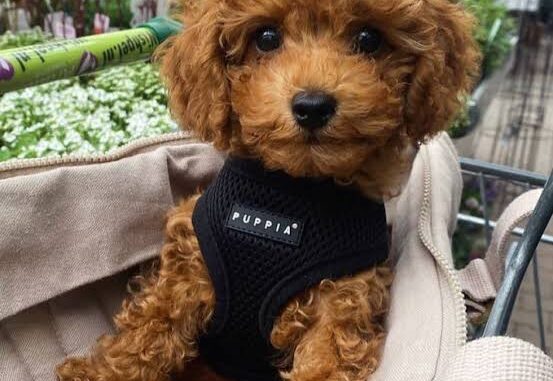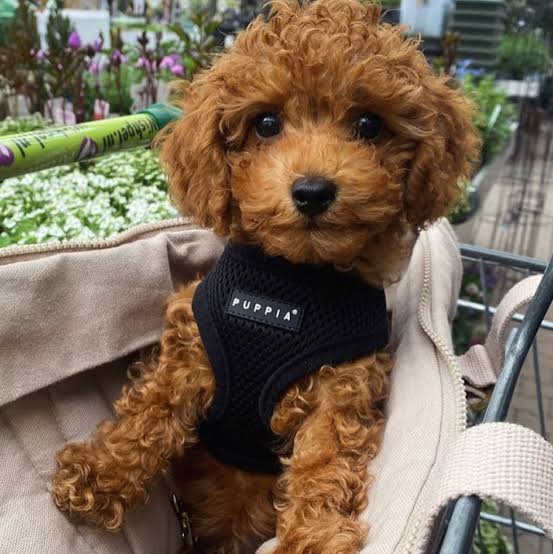
The Best Harness for Small Dogs: Small dogs may be tiny in size, but they come with a big need for the right gear especially when it comes to harnesses. Whether you have a lively Chihuahua, a reserved Shih Tzu, or a curious French Bulldog, a well-fitting, comfortable, and secure harness can make all the difference in your walks, training sessions, and day-to-day life.

This comprehensive guide explores the best harnesses for small dogs, key features to consider, pros and cons, and frequently asked questions.
Why Choose a Harness Over a Collar?
Before diving into specific product recommendations, it’s essential to understand why a harness is a better option for small dogs than a collar.
- Neck and spine protection: Small breeds often have delicate necks and tracheas. A harness disperses pressure across the chest and back, avoiding injury.
- Better control: A harness gives more control, especially useful for energetic or stubborn dogs.
- Escape prevention: Some small breeds are known escape artists. Harnesses can be more secure than collars.
- Reduced risk of choking: Collars can cause choking or coughing, especially if the dog pulls. Harnesses reduce this risk.
What to Look for in a Small Dog Harness
Choosing the right harness involves more than just picking the smallest size. Here are critical features to keep in mind:
1. Size and Adjustability
- Ensure a snug fit without being too tight.
- Adjustable straps allow room for growth or weight changes.
- Check for breed-specific sizing if available.
2. Material
- Breathable mesh is ideal for warmer climates.
- Padded straps offer more comfort.
- Durable materials like nylon or polyester are good for longevity.
3. Design
- Step-in harnesses are easier for squirmy dogs.
- Over-the-head designs offer added security.
- Some have dual clips (front and back) for training and walking.
4. Ease of Use
- Quick-release buckles save time.
- Reflective strips enhance nighttime visibility.
- Machine-washable harnesses simplify cleaning.
Top 5 Best Harnesses for Small Dogs
1. Ruffwear Front Range Dog Harness
Best for active small dogs and outdoor adventures.
- Pros: Lightweight, durable, reflective trim, dual leash attachment.
- Cons: Slightly pricey.
- Ideal For: Owners who go hiking or jogging with their dogs.
The Ruffwear Front Range harness is a favorite among pet owners and trainers. It provides excellent chest padding and adjustability. The front leash clip helps reduce pulling, while the back clip is great for relaxed walks.
2. Puppia Soft Dog Harness
Best for toy breeds and comfort-first owners.
- Pros: Super soft, breathable mesh, great for tiny dogs.
- Cons: Over-the-head design may be tricky for some.
- Ideal For: Chihuahuas, Pomeranians, and other toy breeds.
Puppia’s Soft Dog Harness is often recommended by vets due to its lightweight design. It’s especially good for dogs who dislike bulky harnesses. While it lacks a front clip, it’s a top choice for dogs who don’t pull excessively.
3. Voyager Step-In Air Dog Harness
Best for ease of use.
- Pros: Step-in design, breathable fabric, variety of colors.
- Cons: Limited adjustability.
- Ideal For: Dogs that hate things going over their head.
This Voyager harness is loved for its ease—no need to wrestle it over your dog’s head. It’s particularly helpful for anxious or squirmy dogs. With soft mesh and reflective bands, it balances safety and comfort.
4. Blue-9 Balance Harness
Best for training and behavior correction.
- Pros: Front and back leash attachment, six adjustment points.
- Cons: Slight learning curve for fit.
- Ideal For: Small dogs in training or who tend to pull.
The Blue-9 Balance harness is a trainer-recommended product. Its multiple adjustment points ensure a custom fit, even on dogs with unique body shapes. The front leash ring helps teach polite leash behavior.
5. Kurgo Tru-Fit Smart Harness
Best for car safety and travel.
- Pros: Crash-tested, includes seatbelt tether, solid construction.
- Cons: Bulkier than others.
- Ideal For: Road-tripping pet parents.
For owners who drive with their dogs, the Kurgo Tru-Fit is a great multi-purpose harness. It’s built for safety, made of strong materials, and can double as a walking harness. While bulkier, it’s a great choice for car-conscious owners.
Harness Fit Guide for Small Dogs
Here’s how to measure and fit a harness properly:
- Measure the chest: Use a soft measuring tape around the widest part of the dog’s ribcage.
- Measure the neck: Especially important for over-the-head harnesses.
- Refer to the brand’s sizing chart: Each brand is slightly different.
- Check for a snug fit: You should be able to fit two fingers under the harness.
- Watch for signs of discomfort: Rubbing, chewing, or restricted movement indicates poor fit.
READ ALSO: How to Keep Your Dog Active During the Winter Months
Common Mistakes to Avoid
- Buying the wrong size: Always measure—don’t rely on breed estimates.
- Ignoring adjustability: Dogs grow and fluctuate in weight.
- Choosing form over function: A cute harness is great, but comfort and safety are key.
- Using a worn-out harness: Inspect for frays, broken buckles, or loosened stitching.
Harness vs. Collar: When to Use Both
While a harness is ideal for walking, collars still serve purposes like holding ID tags. Many owners use both:
- Harness for walking
- Collar for identification or around the house
Avoid attaching a leash to a collar if your dog pulls or has respiratory issues.
Harness Training Tips for Small Dogs
If your dog isn’t used to wearing a harness, here are tips to ease the transition:
- Let them sniff and inspect it before wearing.
- Use treats and praise to associate it with positive experiences.
- Start slowly: Have them wear it around the house first.
- Short walks in the beginning help build confidence.
- Avoid forcing it on your dog. This can create negative associations.
FAQs
What is the safest type of harness for small dogs?
The safest harness distributes pressure evenly across the chest and back, such as the Ruffwear Front Range or Kurgo Tru-Fit, and includes secure buckles and snug, adjustable straps.
Should small dogs wear a harness all the time?
No. Dogs should only wear harnesses during walks or supervised activities. Leaving a harness on all day can cause chafing or overheating.
What type of harness prevents pulling?
Harnesses with a front-clip leash attachment, like the Blue-9 Balance Harness, discourage pulling by redirecting the dog’s motion.
Can puppies wear harnesses?
Yes, but ensure the harness is adjustable to accommodate growth. The Voyager Step-In or Puppia Soft Harness is great for puppies.
How often should I replace my dog’s harness?
Inspect it monthly for wear. On average, a harness lasts 6–18 months, depending on use and material.
What’s better for a dog with breathing problems a harness or a collar?
Definitely a harness. Dogs with brachycephalic breeds (e.g., Pugs, Bulldogs) should never be walked using just a collar. A chest-padded harness like Puppia Soft or Ruffwear Front Range is ideal.
My dog hates wearing a harness. What should I do?
Gradual desensitization is key. Let them associate the harness with treats, praise, and fun activities. Avoid forcing it and try different styles to see what your dog prefers.
Can my dog escape from a harness?
Unfortunately, yes if it’s the wrong size or fit. Choose escape-proof designs like Ruffwear Web Master or double-strap harnesses, and check all adjustments before walks.
Leave a Reply
You must be logged in to post a comment.